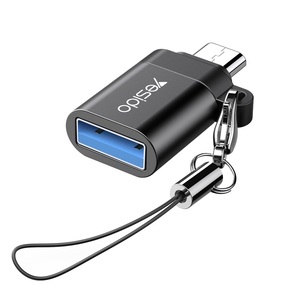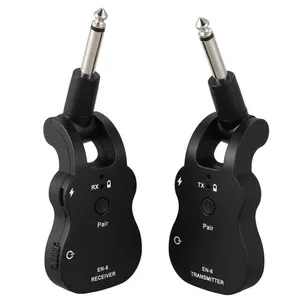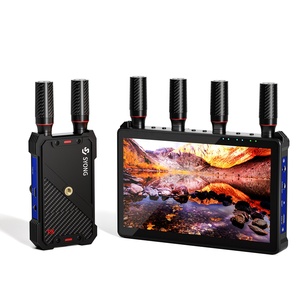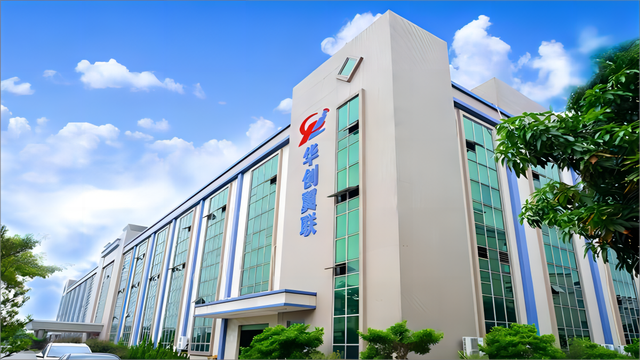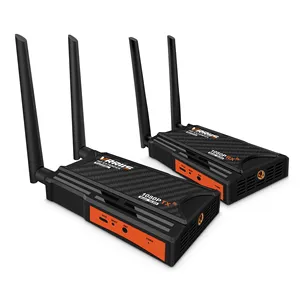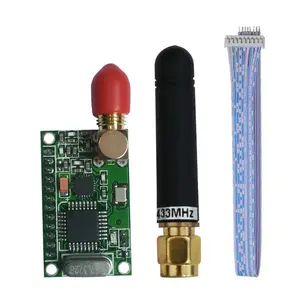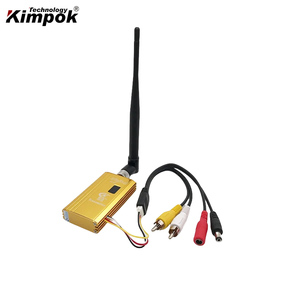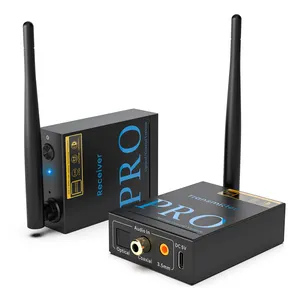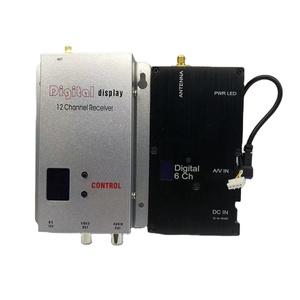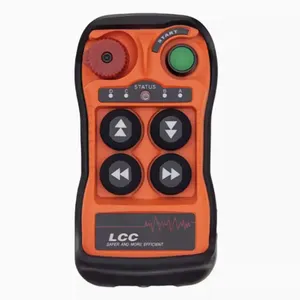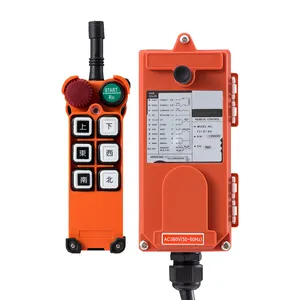Wireless Transmitter And Receiver Producer



 1/3
1/3


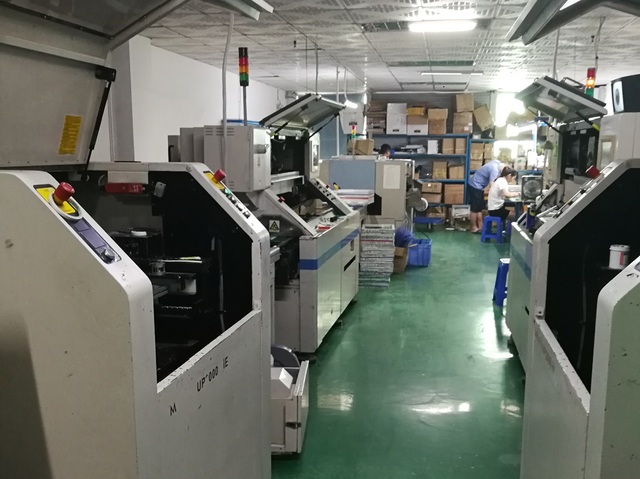

 1/3
1/3

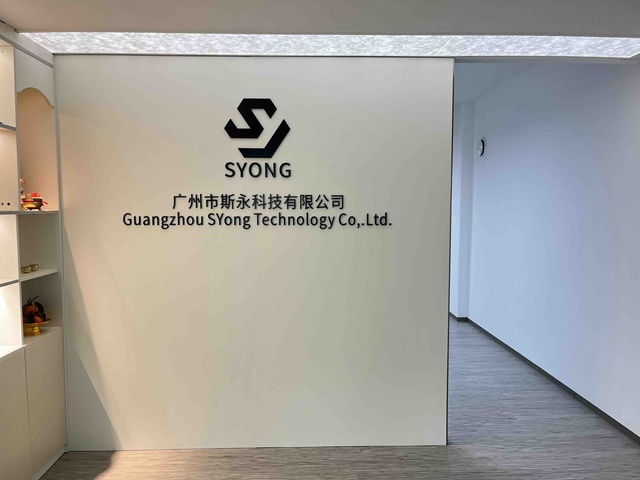
 1/1
1/1






 1/3
1/3




 1/1
1/1



 1/3
1/3



 1/3
1/3



 1/3
1/3


 1/3
1/3



 1/3
1/3


 1/3
1/3



 1/3
1/3


 0
0




 1/3
1/3



 1/3
1/3





 1/19
1/19




 1/3
1/3


 0
0


 1/3
1/3
About wireless transmitter and receiver producer
Where to Find Wireless Transmitter and Receiver Producers?
China remains the global epicenter for wireless transmitter and receiver manufacturing, with key production hubs concentrated in Guangdong and Zhuhai. These regions host vertically integrated electronics supply chains that enable rapid prototyping, scalable production, and cost-efficient component sourcing. Guangzhou and Shenzhen serve as innovation centers for RF (radio frequency) and digital audio-video transmission technologies, supported by dense clusters of PCB fabricators, antenna designers, and firmware developers operating within 50km radii.
Suppliers in this ecosystem typically operate dedicated SMT (surface-mount technology) assembly lines and in-house testing chambers for signal integrity, EMI/EMC, and thermal performance validation. This infrastructure supports lead times averaging 15–25 days for standard orders and enables customization of transmission protocols (e.g., 433MHz, 2.4GHz, 5GHz), output power, and form factors. Buyers benefit from localized access to raw materials such as FR-4 substrates, SMA connectors, and low-noise amplifiers, reducing procurement cycles by up to 30% compared to offshore alternatives.
How to Choose Wireless Transmitter and Receiver Suppliers?
Selecting reliable producers requires systematic evaluation across technical, operational, and transactional dimensions:
Production Capabilities
Prioritize suppliers with documented in-house production lines, including automated soldering, RF calibration stations, and anechoic chamber testing. Confirm minimum factory areas exceeding 2,000m² and monthly output capacity validated through shipment records. Look for evidence of R&D investment—such as proprietary modulation techniques or dual-band transmission designs—as indicators of engineering maturity.
Quality Assurance Protocols
While formal ISO 9001 certification is not universally listed, leading suppliers demonstrate quality control through consistent on-time delivery rates (>95%) and structured testing procedures. Verify compliance with RoHS and CE standards for EU market alignment, particularly for products involving radio emissions. Request test reports covering frequency stability, interference resistance, and operating temperature range (-10°C to +60°C typical).
Transaction Reliability Indicators
Evaluate response time (≤4 hours recommended), reorder rate (indicative of customer satisfaction), and online revenue volume as proxies for operational stability. Use third-party escrow mechanisms for initial transactions and require sample validation before bulk ordering. Cross-check product specifications against actual units to confirm claimed transmission distances, latency, and compatibility with HDMI, USB, or analog audio interfaces.
What Are the Leading Wireless Transmitter and Receiver Producers?
| Company Name | Location | Main Products | Online Revenue | On-Time Delivery | Avg. Response | Reorder Rate | Sample MOQ | Price Range (USD) |
|---|---|---|---|---|---|---|---|---|
| Zhuhai Guangtai Electronic Co., Ltd. | Zhuhai, CN | Audio & Video Accessories, HDMI Adapters, Guitar Transmitters | US $330,000+ | 94% | ≤4h | 32% | 1 piece | $19–$55 |
| Shenzhen Fengbaode Electronic Technology Development Co., Ltd. | Shenzhen, CN | RF Modules, Remote Controls, Wireless Data Transmitters | US $10,000+ | 96% | ≤4h | 15% | 10 pieces | $1.98–$2.68 |
| Guangzhou Syong Technology Co., Ltd. | Guangzhou, CN | HDMI Wireless Kits, Long-Range Audio/Video Systems | US $750,000+ | 87% | ≤2h | <15% | 2 pieces | $20–$159 |
| Shenzhen Huachuangyilian Electronics Co., Ltd. | Shenzhen, CN | WiFi Extenders, 5km Point-to-Point Transmitters | US $100,000+ | 98% | ≤2h | 15% | 1–2 pieces | $2.90–$39 |
| Shenzhen Weilong Technology Co., Ltd. | Shenzhen, CN | Wireless AV Kits, Custom OEM Solutions | US $60,000+ | 100% | ≤2h | <15% | 1 set | $44–$128 |
Performance Analysis
Zhuhai Guangtai stands out with a high reorder rate (32%), indicating strong post-sale satisfaction, particularly in niche audio applications like guitar transmitters. Shenzhen Huachuangyilian demonstrates exceptional reliability with a 98% on-time delivery rate and competitive pricing for long-range WiFi systems. Guangzhou Syong commands premium pricing due to advanced 4K HDMI transmission capabilities but shows lower customer retention, suggesting potential gaps in after-sales support or consistency. Shenzhen Weilong achieves perfect on-time fulfillment, making it a preferred choice for time-sensitive contracts despite higher entry-level costs. Suppliers in Shenzhen collectively exhibit faster average response times (≤2h), reflecting mature export-oriented operations.
FAQs
What certifications should wireless transmitter suppliers have?
Essential compliance includes RoHS for hazardous substance control and CE/FCC for electromagnetic compatibility and radio frequency regulations. For export to North America and Europe, verify adherence to Part 15 (FCC) or RED (EU) directives governing unlicensed radio devices.
What is the typical MOQ and lead time?
Standard MOQs range from 1 to 100 pieces depending on complexity, with most suppliers offering single-unit sampling. Lead times average 10–20 days post-payment confirmation, extendable by 5–10 days for custom firmware or enclosure modifications.
Can suppliers customize transmission range and frequency?
Yes, many offer configurable options including 433MHz, 315MHz, 2.4GHz, and 5.8GHz bands, with output power adjustable from 10mW to 1W. Transmission distance can be engineered from 100 meters to over 5 kilometers using directional antennas and signal repeaters.
Do manufacturers support OEM/ODM services?
Multiple suppliers, including Shenzhen Weilong and Guangzhou Syong, explicitly offer custom branding, PCB redesign, and firmware development. Minimum order thresholds for full ODM projects typically start at 500 units, with NDA-protected design collaboration available upon request.
How to validate product performance before bulk ordering?
Request functional samples tested under real-world conditions—evaluating signal penetration through walls, latency during video streaming, and coexistence with Wi-Fi networks. Conduct side-by-side comparisons using spectrum analyzers or network monitoring tools to verify stated bandwidth and jitter metrics.





